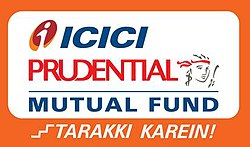Floating Rate

1Y
SI
Nav
Risk

1Y
3Y
5Y
SI
Nav
Risk

1Y
3Y
5Y
SI
Nav
Risk

1Y
3Y
5Y
SI
Nav
Risk

1Y
3Y
5Y
SI
Nav
Risk

1Y
3Y
5Y
SI
Nav
Risk

1Y
3Y
5Y
SI
Nav
Risk

1Y
3Y
5Y
SI
Nav
Risk

1Y
3Y
SI
Nav
Risk

1Y
3Y
SI
Nav
Risk
A Floating Rate Debt Fund is a type of debt mutual fund that primarily invests in debt instruments with variable or floating interest rates. These instruments have interest payments that are tied to a benchmark rate, such as the repo rate, MIBOR, or Treasury bill yields. The coupon (interest) on these securities resets periodically based on market interest rates.
Traditional debt funds usually invest in fixed-rate bonds. In contrast, floating-rate funds provide more stability to the investors in the case where there is a rise in interest rates. When the interest rate adjusts upward, the income of the fund also goes up, thus lessening the effect of rate increase on the income. This also implies that Floating Rate Funds are a safe bet if the interest rates are set to increase or continue to be unstable.
Who Should Consider This Fund
Floating Rate Debt Funds are the most appropriate investment vehicles for individuals having a low to moderate risk profile and who are looking for safe portfolios that can protect them from the negative impact of increased interest rates. The funds, which are designed with a short- to medium-term investment time frame in mind, typically from six months to three years, are intended for individuals who are interested in such periods.
The funds also fit the profile of those conservative investors who are looking for the best possible investment. They would be the most appropriate if they decide to go for fixed deposits, given the state of the economy at present or the tightening of the monetary policy cycle. Because of the fact that they lessen the risk of changing interest rates, they give a more stable Net Asset Value (NAV) compared to funds of longer durations.
Risks and Return Potential
Floating-rate funds are usually low-risk in respect of interest rate sensitivity, as their profits correspond with the market. Nevertheless, they might still be exposed to some credit risk, which would depend on the quality of the instruments that they use. Also, some floating-rate funds invest in fixed-rate instruments and employ interest rate swaps or derivatives to generate synthetic floating-rate exposure.
The typical return range for these funds is around 6% to 7.5% per annum, depending on the interest rate cycle, the fund manager's allocation strategy, and the credit quality of the instruments held.
Taxation is similar to that of other debt funds: if held for less than three years, Short-Term Capital Gains (STCG) are taxed according to the individual's income tax slab. If held for more than 3 years, Long-Term Capital Gains (LTCG) are taxed at 20% with indexation, making them tax-efficient for more extended holding periods.
Benefits of Floating Rate Debt Funds
The most important feature of Floating Rate Debt Funds is their capability to limit the interest rate risk, particularly when the market is expected to be more volatile due to rising rates. This provides a natural hedge against rate volatility compared to fixed-income funds, which may react negatively in such scenarios.
Additionally, these funds offer higher liquidity and greater flexibility than long-term funds, while delivering more stable and predictable income in rising rate environments. Investors seeking steady income with relatively low volatility will find floating-rate funds to be an excellent choice.
Things to Keep in Mind Before Investing
Although Floating Rate Funds mitigate interest rate risk, investors should exercise caution regarding credit quality. Ensure the fund is not taking excessive exposure to lower-rated papers in search of higher yields.
These funds may underperform when interest rates are falling, as the reset mechanism causes interest income to decrease. It's important to align investments in Floating Rate Funds with prevailing and expected interest rate trends to capitalize on their core strategy.
Get In Touch
Interested in exploring more about JezzMoney Mutual Fund Distributors Software? Submit the form, and we will respond quickly.
Get Expert Advice on Investment in Mutual Funds!
- Certified mutual fund distributors around India will reach out to help you build your future.
- Connect with trusted mutual fund distributors and find them from your city and pincode area.
- JezzMoney is only the mediator to help you connect with these certified professionals.
- It is your obligation to gather accurate information when you receive contact from our platform.